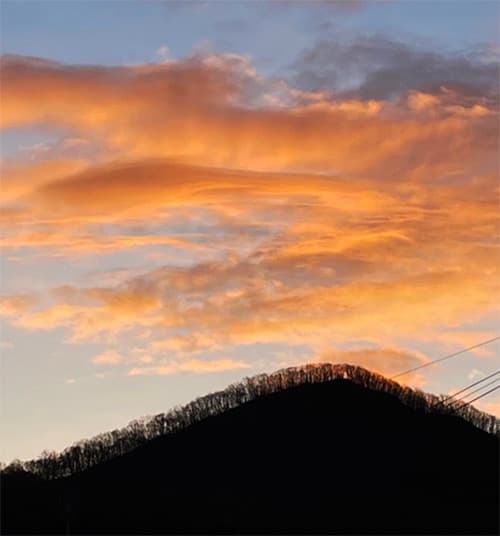
だんだん加齢してきて、仕事人生にも一定の区切りがついてきて、自分が生きてきたなかでいろいろと疑問に思ってきたことへの「探究心」がすこしづつ頭をもたげてきている。
きのうサイモンとガーファンクルの名曲「冬の散歩道」についてブログで書いたけれど、日本文化圏で戦後世界を生きてきて、ずっと感じ続けている日本詩歌の「音楽性」についての疑問。わたしたち年代は、まずは演歌の楽曲が、すでに「伝統的」なものとして存在した上で、加山雄三の「若大将」シリーズの音楽からビートルズ、植木等の楽曲、またサイモンとガーファンクルなどの海外音楽などの音感世界をたっぷりと浴びてきている。
「詩文と音楽」の両方からの刺激の中に生き続けてきた。歌の中で歌い手が朗々と発語する詩文に、そのメロディが一体化して記憶化されていった。
それはテレビとか映画、レコードというメディア形式でどんどんと脳内に浸透してきた。そういう音楽性の洪水のただなかに生きていた。しかし、一方でわたしたち年代だけがそのように多様な「音楽性」を感受していただけだとは、どうも思われなかった。
よく、メロディのようなものは記録的に残りにくいと言われる。万葉の古歌はいったいどのように「発声」されていたかは、科学的に証明しにくいとされる。一方で、詩文は「書き言葉」として記録されたから現代にまで残り続けている。音楽性のミッシングリンク。
しかし、たとえば白村江の「世界大戦」に向かう熟田津の港での夜に額田王が歌い上げたとされる詩文は、どう考えても深い音楽性を伴っていたと想像している。
『熟田津(にきたつ)に、船(ふな)乗りせむと、月(つき)待てば、潮(しほ)もかなひぬ、今は漕(こ)ぎ出(い)でな』という歌は、出征兵士を鼓舞する政府側の「歌姫」として現実に歌い上げたに違いないと思っている。赤々としたかがり火の後背の中で、2代の天皇に寵愛された絶世の美女が軍人たちにアジテーションしたという幻影的光景が想像されてしまうのだ。そのように詩文に現れた「音楽性」が実際にどのようなメロディ・旋律だったか、という問いを持ち続けてきた。
そういう疑問に対して「文化は縁辺に残っていく」という説がある。日本文化圏の中央部での先端的文化は各地の「まつり」などの機会に徐々に「波動」していって、最後、縁辺の地でそれらの残滓が純粋化されて残っていくという説。
そんな思いを持ちながら、津軽じょんがらや、相馬盆唄などの節回しやメロディ性に強い興味を持ち続けてきている。コトバと音楽性の純日本人的な祖型が、と妄想しているのだ。
道はながく遠いけれど、テーマ領域として息長く持ち続けたい。
English version⬇
Japanese Poetic Mind and Musicality, What is a 5-7 word melody?
How were these poems “sung” in the Manyo world of poetry? What was the melody sung by the immensely beautiful Nukata-ou? ...
As I get older and my professional life comes to a certain end, my “spirit of inquiry” into the many questions I have been asking myself in my life is beginning to rear its head a little more and more.
Yesterday I wrote about Simon and Garfunkel's famous song “Winter Walk” in my blog, and I have been wondering about the “musicality” of Japanese poetry, which I have been feeling since I lived in the postwar world in the Japanese cultural sphere. In our generation, we have already been exposed to “traditional” enka (traditional Japanese ballad) music, and then to the music of Yuzo Kayama's “Wakadaisho” series, the Beatles, Ueki and others, as well as foreign music such as Simon and Garfunkel.
He has continued to live in the midst of stimuli from both “poetry and music. The melody of a song is integrated with the words of the poet in a song, and the melody becomes a part of the song and is memorized.
It has been permeating our brains in the form of media such as television, movies, and records. We were living in the midst of such a flood of musicality. On the other hand, however, I did not think that we were the only ones who were aware of such a variety of “musicality.
It is often said that things like melodies are difficult to record. It is said that it is difficult to scientifically prove how the ancient poems of Manyo were “vocalized”. On the other hand, poetic texts have survived to the present day because they were recorded as “written words. The Missing Link of Musicality.
However, I imagine, for example, that the poetic text that King Nukata is said to have sung at night in the port of Nukitazu on his way to the “World War” at Hakumuragang was accompanied by a deep musicality by all accounts.
The song, “Wait for the moon, and the tide will go out, now that we are going to sail to Nikitatsu,” must have been sung in real life as a “songstress” on the government side to inspire the soldiers to go to war. One can imagine the visionary scene of an immensely beautiful woman, favored by two emperors, agitating the soldiers in the back of a reddish bonfire. Thus, I have been asking myself what kind of melody or melody was actually the “musicality” that appeared in the poetic texts.
In response to such questions, there is a theory that “culture remains at the margins. This is a theory that the leading-edge culture in the center of the Japanese cultural sphere gradually “ripples” through festivals and other occasions in various regions, and that at the end, the remnants of the culture are purified and remain at the fringes of the sphere.
With this in mind, I have maintained a strong interest in the versification and melodic nature of Tsugaru jongara and Soma bon-uta. I have a fantasy that there is a purely Japanese ancestor of Kotoba and musicality.
It is a long way to go, but I would like to keep it as a theme area for a long time.


















